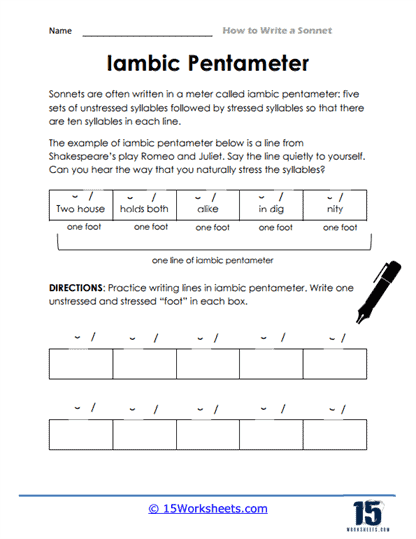Iambic Pentameter

Worksheet Description
This worksheet introduces the concept of iambic pentameter, a common meter in sonnet writing, which consists of five sets of unstressed syllables followed by stressed syllables, resulting in ten syllables per line. An example from Shakespeare’s “Romeo and Juliet” is provided to illustrate iambic pentameter, with marks indicating the stressed and unstressed syllables. Students are encouraged to read the line aloud to internalize the rhythmic pattern. The worksheet then offers practice space for students to write their own lines of iambic pentameter, with individual boxes allocated for each “foot” or set of syllables.
The worksheet is designed to teach students how to write in iambic pentameter, which is a foundational skill for composing sonnets and other forms of poetry. It guides them through the process of understanding and creating the rhythm that defines this meter. By practicing the arrangement of unstressed and stressed syllables, students learn to develop a sense of poetic timing and flow. This activity not only enhances their technical ability to write poetry but also helps them appreciate the musical quality of verse.
